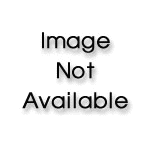
Interpretation:
The chemical formulas and names of the binary acids and oxoacids that contain group VIIA elements (Halogen group), group IIIA elements (Boron group), IVA elements (Carbon group), group VA elements (Nitrogen group), and group VIA elements (Oxygen group) are to be written.
Concept introduction:
Acids are the compounds thatwhen dissolved in water produce hydrogen ions
There are two types of acids:
(a) Binary acids:These are the compounds where a hydrogen atom is combinedtoa nonmetallic element, such as Cl, Br, I, etc. For examples,
(b) Oxoacids: These are the compounds where a hydrogen atom is combined to oxygen and a nonmetal element. For examples,
Want to see the full answer?
Check out a sample textbook solution
Chapter 2 Solutions
CHEMISTRY MCC CUSTOM W/CONNECT >CI<
- The isotope of an unknown element, X, has a mass number of 79. The most stable ion of the isotope has 36 electrons and forms a binary compound with sodium, having a formula of Na2X. Which of the following statements is(are) true? For the false statements, correct them. a. The binary compound formed between X and fluorine will be a covalent compound. b. The isotope of X contains 38 protons. c. The isotope of X contains 41 neutrons. d. The identity of X is strontium, Sr.arrow_forwardSulfur dioxide, SO2, is a molecular compound that contributes to acid rain, and CaCO3 is an ionic compound that can neutralize acid rain. Explain the difference in the meanings of these two formulas.arrow_forwardWrite the chemical formula of each of the following: a The compound made up of a crystal with two particles coming from chromium atoms for every three particles coming from oxygen atoms. b The compound made up of a crystal with one particle coming from a barium atom for every two particles coming from chlorine atoms. c The compound made up of molecules with 12 carbon atoms, 22 hydrogen atoms, and 11 oxygen atoms. d The compound made up of molecules with three hydrogen atoms, one phosphorus atom, and four oxygen atoms.arrow_forward
- Fill in the blanks in the following table. Selenium is Z = 34, Se, and tellurium is Z = 52, Te. Acid Name Acid Formula Acid Name Acid Formula HCl HClO4 Nitric acid Hydroiodic acid H3PO4 HClO2 Hydro sulfuric acid Selenic acid HNO2 HBrO2 Hydro selenic acidarrow_forwardWrite the chemical formula of each of the following: a The compound made up of a crystal with one particle coming from a nickel atom for every two particles coming from chlorine atoms. b The compound made up of a crystal with two particles coming from silver atoms for every one particle coming from an oxygen atom. c The compound made up of molecules with six carbon atoms, 12 hydrogen atoms, and six oxygen atoms. d The compound made up of molecules with two hydrogen atoms, one sulfur atom, and four oxygen atoms.arrow_forwardWrite the name for each of the following binary compounds of nonmetallic elements. GeH4 d. CO2 N2Br4 e. nh5 P2O5 f. SiO2arrow_forward
- Name the compounds in parts ad and write the formulas for the compounds in parts eh. a. NaBr b. Rb2O c. CaS d. AlI3 e. strontium fluoride f. aluminum selenide g. potassium nitride h. magnesium phosphidearrow_forwardTwo samples of different compounds of sulfur and oxygen have the following compositions. Show that the compounds follow the law of multiple proportions. What is the ratio of oxygen in the two compounds for a fixed amount of sulfur? Amount S Amount O Compound A l.210g 1.811 g Compound B 1.783 g 1.779 garrow_forward
 Chemistry: The Molecular ScienceChemistryISBN:9781285199047Author:John W. Moore, Conrad L. StanitskiPublisher:Cengage Learning
Chemistry: The Molecular ScienceChemistryISBN:9781285199047Author:John W. Moore, Conrad L. StanitskiPublisher:Cengage Learning Introductory Chemistry: A FoundationChemistryISBN:9781285199030Author:Steven S. Zumdahl, Donald J. DeCostePublisher:Cengage Learning
Introductory Chemistry: A FoundationChemistryISBN:9781285199030Author:Steven S. Zumdahl, Donald J. DeCostePublisher:Cengage Learning Chemistry & Chemical ReactivityChemistryISBN:9781133949640Author:John C. Kotz, Paul M. Treichel, John Townsend, David TreichelPublisher:Cengage Learning
Chemistry & Chemical ReactivityChemistryISBN:9781133949640Author:John C. Kotz, Paul M. Treichel, John Townsend, David TreichelPublisher:Cengage Learning Chemistry & Chemical ReactivityChemistryISBN:9781337399074Author:John C. Kotz, Paul M. Treichel, John Townsend, David TreichelPublisher:Cengage Learning
Chemistry & Chemical ReactivityChemistryISBN:9781337399074Author:John C. Kotz, Paul M. Treichel, John Townsend, David TreichelPublisher:Cengage Learning Chemistry: An Atoms First ApproachChemistryISBN:9781305079243Author:Steven S. Zumdahl, Susan A. ZumdahlPublisher:Cengage Learning
Chemistry: An Atoms First ApproachChemistryISBN:9781305079243Author:Steven S. Zumdahl, Susan A. ZumdahlPublisher:Cengage Learning





